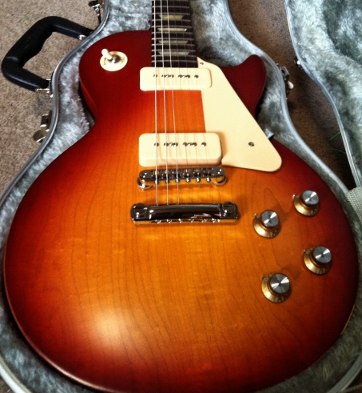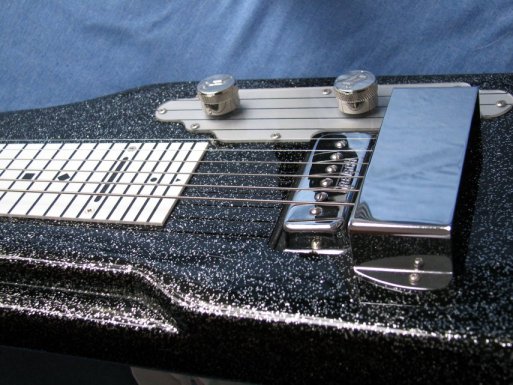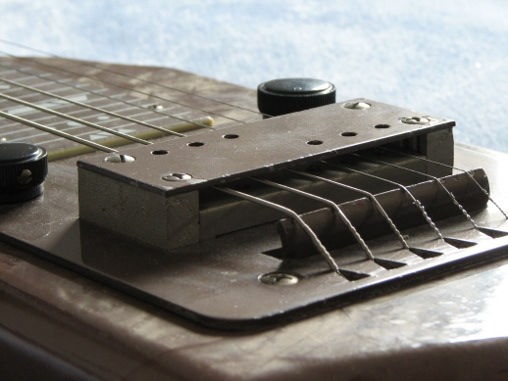The Musician's Room: Some Electric Guitars
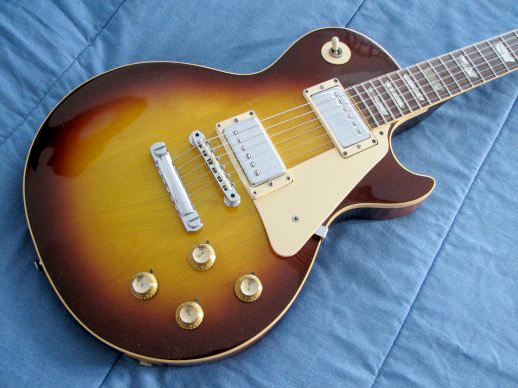 "Pauly"
"Pauly"
An Aussie friend gave this guitar its name in 1978. Here's my Gibson Les Paul Standard which dates from 1974 and was built at the old Gibson plant in Kalamazoo, Michigan. The body and neck construction, knobs, bridge, tuners and other characteristics and appointments of this instrument date it to anywhere from 1969 to 1974 but the pots dial it in. One thing is clear, however, it was not part of the "Standard" series which began production in Nashville in 1976. It has what a Gibson employee from the period called a "Dark Wineburst" finish - a wine red color goes right out to the edge and the backs and sides of the body and neck are sunburst. Though it's not a very collectable LP, I've played and loved it since 1977 and it carries lots of memories. I saved for this guitar for three years and still couldn't affort it. A dealer took pity on me and sold it to me with a Univox case to bring down the price. In 1998, after it had seen a lot of miles and smiles, Ken Marshall, the excellent luthier at Norfolk, Virginia's Audio, Light & Musical, planed the fretboard and refretted Pauly. We settled on .046 frets, a little taller than the standard Gibson fare. The result of his work is simply marvelous! The neck offers greater security in bends and a more settled feel in general. This year I finally tracked down an authentic 1974 Gibson case for it to live in.
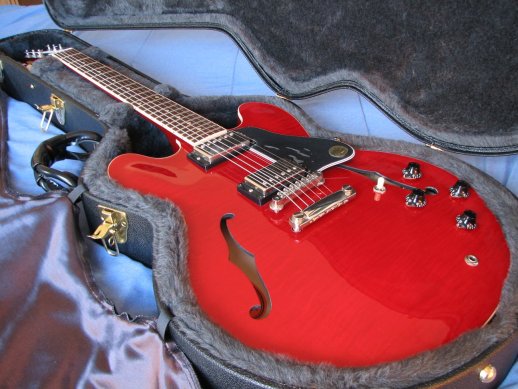
Semi-Hollow Sweetness
Here's a new guitar buddy, a 2005 Gibson ES-335 Dot. After years of me wishing I could get some of those vintage semi-hollow tones, my sweet wife surprised me with this beauty for Christmas. It's got that woody, airy ES sound: The sweet neck pickup and the jangly bridge pickup with just the right amount of body sound mixed in. I was drawn to this one by its sound, from among about six or seven. I keep thinking, "So this is where those classic tones came from." It's a real bonus that it is visually pretty as well, with a subtle flamey maple all the way around. Kenny set up this one as well, and it feels great. It began with frets as high as .057(!) but they are now around .053 and I love that. The guitar features Grover tuners, nickle hardware, and a "1960s slim-taper neck." Gibson has gotten back to some nice building practices and here is the result. This one has become a favorite recording instrument and home base. More Pictures and A Review
 The "Latest Greatest" Strat
The "Latest Greatest" Strat
Here is a 1999 G&L S-500. The small G&L company was Leo Fender's last venture before his death and the place where he felt he was really able to update his older designs, tweak them to perfection, and have them built by hand. The current G&L S-500 is just that: a hand-built update of the Fender Stratocaster featuring high-output ceramic pickups. G&L's Strat-types can be ordered with a hard-tail or Leo's excellent "Dual Fulcrum" tremolo tailpiece, which appears to be Leo's take on the Wilkinson unit. To my hands, G&Ls just feel more solid than most Fenders I've tried. The "shouldering" of the neck, being more rounded than a Fender and thus more "c" shaped, is very comfortable.
The guitar's circuitry offers "passive bass and treble" tone controls and an "expander" switch which allows all possible pickup combinations. Between the passive bass control and the Magnetic Field Design pickups, you can dial between a Strat sound and a much fuller sound somewhat nearer to humbuckers. This particular guitar features a nicely figured Louisiana Swamp Ash body, a lightly-figured birdseye maple neck, and a white pearloid pickguard. My wife had this one built to order for me. I recently turned it over to Kenny Marshall for his special action treatment. Kenny worked it into really fine shape and it has since appeared on several album recordings.
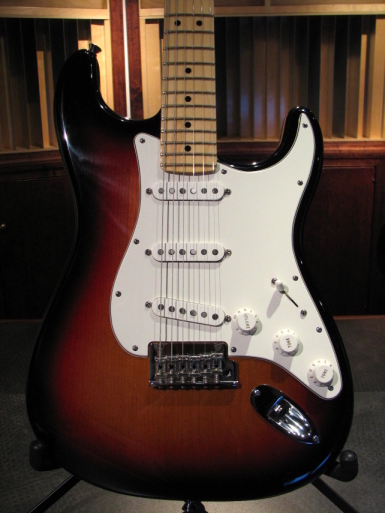 More "Spank"
More "Spank"
This is a 2009 Fender American Standard Stratocaster. I finally gave in and got one. The body is alder with a three-tone sunburst and is topped with a three-ply parchment-colored pickguard and appointments. The maple neck is C-shaped and features a 9.5" radius fingerboard with medium-jumbo frets. The neck is gloss on the front and satin on the back and is tinted with an aged toner. The fretboard edges are hand rolled for smoothness and comfort and I think they've acheived that goal. The guitar has three single-coil pickups and the Delta tone system for the bridge and neck pickups that can remove itself from the circuit when opened up. Fender has recently added a couple of interesting features to the American Standards. They've gone back to their original practice of making the bridge pieces from bent steel and they've reformulated the metal for the trem block to increase density. Both are supposed to increase sustain and improve the tone. It is a pretty sounding guitar with bell-like highs, which was what I was after. The body resonates well, and I suppose that could be partially because it is pretty light at 7.9 lbs. This strat sounds great plugged straight into a Deluxe Reverb amp with no effects. It is hard to believe that after all these years, this is my first Fender guitar. My review is HERE .
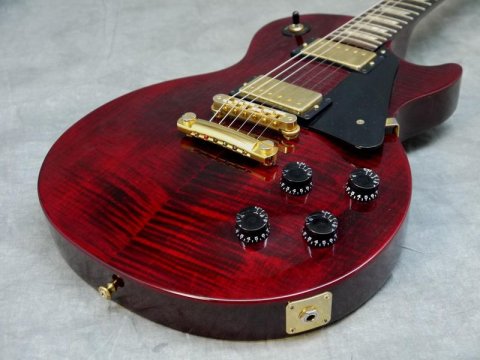
Flame On!
The Gibson Les Paul Studio is a great mid-level guitar that allows players to dip their toe into the Les Paul waters without breaking the bank. Oh, to have had this level of guitar available in my early years. At that point, back in the 1970s, a young guitarist's only choice was between crap or expensive royalty. Enter the LP Studio. Every once in a while Gibson gets a moderately flamey maple top set that needs a home and it shows up on a Studio. This is a wine red 2007 Studio with gold hardware. It is probably chambered, and as a result is quite light at 7lbs 6oz. That's good for my back. The guitar has 498T and 490R Alnico pickups that sound pretty sweet, and has a fuller neck like a '57. It sits tonally somewhere between the '74 Standard and the ES-335. I've just liked the looks of these moderately flamed wine red LPs since they began appearing. Though it photographed well, this one had been, um... well played-in. With a few hours of love and care and some finish restoration, this guitar is shined up and glowing again. Look HERE to find out what I did. A shiny new pickguard completed the makeover. More pics HERE.
